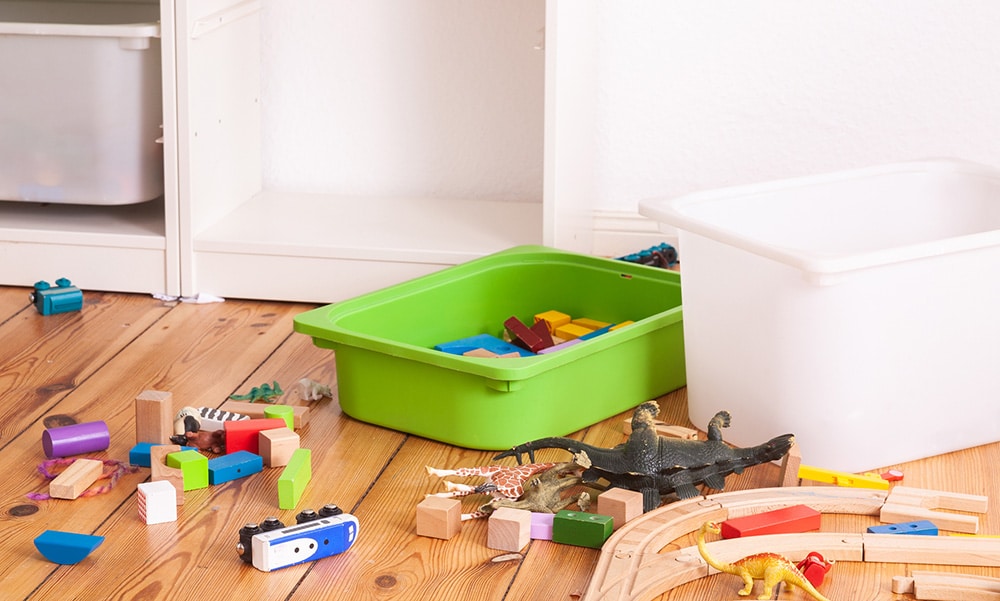Purchasing toys for children or grandchildren should be an enjoyable and stress-free experience that does not include worrying about the safety of the toys you purchase. Unfortunately, however, dangerous children’s toys make it to the marketplace and cause a shocking number of injuries – including deaths – each year in the United States.
If you believe that a dangerous toy caused your child to be injured, or even killed, it is crucial that the responsible parties are held accountable and that you are compensated for the physical injuries and emotional trauma endured by your child and your family. At Bailey Fisher, we have more than half a century of combined legal experience fighting for the rights of victims who were injured by defective products, including dangerous toys. We are dedicated to using our experience and vast resources to ensure that you are fully compensated by the responsible parties.
Dangerous Toys – Facts and Figures
Although we have numerous federal laws in the U.S. aimed at preventing dangerous products from ending up in the hands of children, a staggering number of children are injured each year in toy-related accidents that could have – and should have — been prevented. Consider the following facts and figures released by the Consumer Product Safety Commission (CPSC):
- There were an estimated 198,000 toy-related injuries in the U.S. in 2020
- There were 9 toy-related deaths in the 2020 calendar year among children 14 years of age or younger.
- 51 children died from toy-related incidents from 2018 to 2020
- 75 percent of injuries in 2020 were sustained by children 14 years of age or younger; 73 percent were sustained by children 12 years of age or younger, and 40 percent were sustained by children 4 years of age or younger.
- In 2020, CPSC issued recalls on 14 toys, representing more than ten million (10,000,000) units of toys that could pose a serious risk of injury or death to children.
Common Injuries from Dangerous Toys
The ways in which a child might be injured by a dangerous toy are endless, especially given the predictably unpredictable way that children often play with toys. Nevertheless, there are some common injuries from dangerous toys, including:
- Suffocation. Toys such as plush animals, balloons, and anything small enough for a young child to get inside can cut off a child’s airway or deprive them of oxygen, leading to suffocation and even death.
- Choking. Small parts that are intended to come apart or that can easily be pulled apart pose a significant and known choking hazard to small children who frequently put anything they can get their hands on in their mouths.
- Battery injuries. Batteries keep getting smaller and smaller, making them dangerous to children if they are swallowed.
- Traumatic brain injuries (TBI). Scooters, hoverboards, and other motorized toys often put a child directly in the path of pedestrians and motorists. A collision can result in serious injury to the child, including the possibility of a traumatic brain injury.
- Eye injury. Kids love projectile toys – and toy manufacturers cater to that love by coming up with better and more elaborate projective toys. Regardless of what the projectile is made of, if it hits a child in the eye serious injury can occur.
- Blunt force impact injuries. Many of those same projectile toys can cause blunt force impact injuries when a projectile hits a child anywhere on the child’s body. In addition, non-projectile toys cause blunt force impact injuries because the toy is made using substandard materials, is marketed as a weapon, or is used by children who are too young.
What Makes a Dangerous Toy a Defective Toy?
By their very nature, children can play rough, making injuries a common occurrence. When a dangerous toy caused or contributed to a child’s injuries, however, the law provides a legal mechanism to pursue the responsible party (or parties) through a product liability lawsuit. Product liability is the area of the law that allows the victim of a defective product to seek compensation for injuries. Any product, including children’s toys, can be defective in one of three ways, including:
- Design Defects. A design defect is one that is introduced into the product during the design phase, meaning the defect will be present in all products manufactured using that design.
- Manufacturing Defects. A manufacturing defect is introduced into the product during the manufacturing phase, meaning the defect will only be present in products manufactured during a specific time period, at a specific location, or using a specific material or part.
- Failure to Warn Defects. For products that cannot be made completely safe, a warning is required. If an adequate warning is missing, the product is defective. Not that with children’s toys, simply including a warning on a dangerous toy will not typically insulate a toy manufacturer from liability.
Who Is Responsible for Injuries Caused by Dangerous Toys?
When a defective toy causes injury or death, any party in the “chain of distribution” could be held liable, including the product designer, product or component manufacturer, and product assembler or installer as well as the wholesaler and retailer. Product liability claims stemming from dangerous toy injuries often involve complex litigation with multiple potentially- liable defendants which is one of many reasons why you should have an experienced product liability attorney on your side.
Get Help from Experienced Dangerous Toys and Orlando Product Liability Claims Attorneys
The dangerous toys and Orlando product liability claims attorneys at Bailey Fisher are dedicated to holding accountable all parties responsible for causing injury to your child. We zealously advocate for families who have suffered injury or loss caused by a dangerous toy to ensure that they are justly compensated for all their injuries.
Call us at 407-628-2929 or submit our online form today. One of our experienced dangerous toys and Orlando product liability claims attorneys will evaluate your case for free. For viable personal injury cases, we will follow up with the necessary legal action to hold the responsible party accountable for their negligence and recover the financial compensation you deserve for your pain, suffering, and losses.


